This Blu-ray set is currently available from Radiance Films.
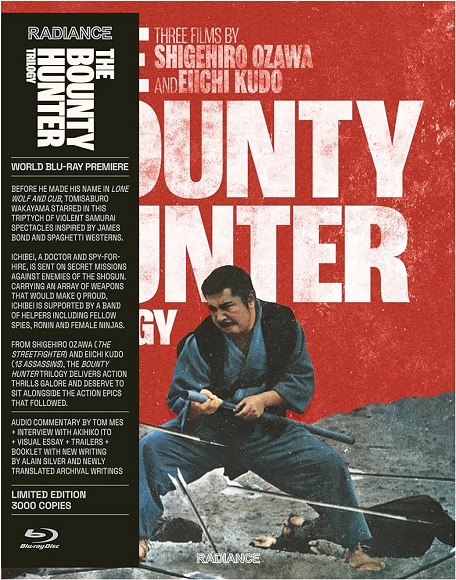
In the late 1960s, movies in Japan began to change dramatically. As noted in the recent Blu-ray review of the wild and extremely enjoyable Black Tight Killers (1966), the country began embracing and incorporating international cinema into their productions. The Bounty Hunter Trilogy from Toei Studios is another clear example of the trend. This period series is set during the Shogun era, but follows an anti-hero who not only takes down villains with his sword, but in the 60s mold, also stands against the establishment. These films combined what many would expect from a samurai picture, but presented it in a new way with added elements from spaghetti western and even James Bond spy stories also playing in cinemas.
This week Radiance Pictures have debuted The Bounty Hunter Trilogy on Blu-ray. Yes, these three movies have never been released anywhere in the world on Blu-ray, so it’s great to see them finally being presented to audiences on disc. As expected from distributor Radiance Films, the stylish widescreen movies look impressive and deliver loads of action and dark humor in equal measure. It also helps that they were helmed by talented filmmakers Shigehiro Ozawa (the Street Fighter series) and Eiichi Kudo (Big Time Gambling Boss) and star charismatic performer Tomisaburô Wakayama (the Lone Wolf and Cub series). Admittedly, the flicks do feature some dated story elements, but anyone fascinated by Japanese action cinema should certainly check this set out.
Killer’s Mission (1969) is set in the 1700s during the Shogun era, where several different groups of warriors ruled over different parts of Japan while maintaining political relationships. The story introduces viewers to Shikoro Ichibei (Tomisaburô Wakayama) a swordsman who is hired by the Shogun Tokugawa to go undercover and spy on the Satsuma shogun outfit. It is believed that the Satsuma have made a deal to buy rifles and other deadly weapons from the Dutch. Ichibei travels to the region, slicing and dicing his way through enemies. But in the process, he uncovers a conspiracy that leaves him in grave danger as he is double-crossed.
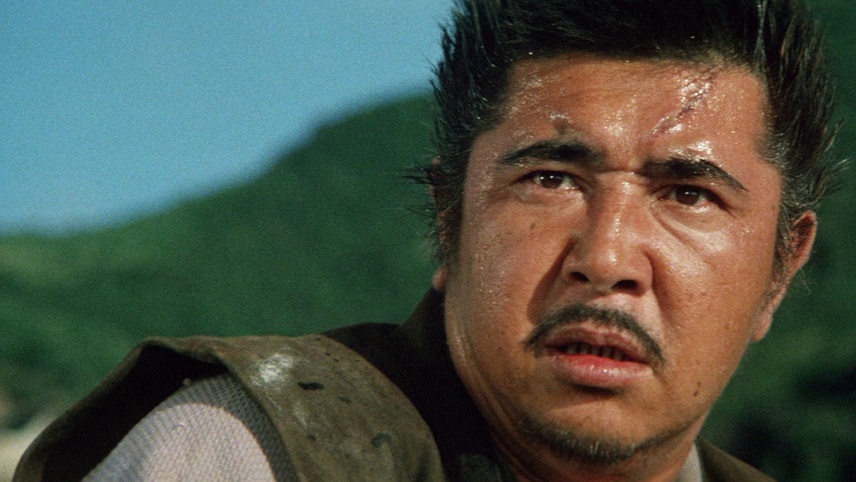
The story is simple, but the film does benefit from an excellent lead and dynamically shot action scenes. This is an early example of movies graphically depicting bloody melees between warriors. Limbs are chopped off, resulting in red geysers spraying from wounds. It certainly would have made an impression back in the day and it’s still eye-opening to see a sword unexpectedly take a limb off during a fight and witness it fall to the ground.
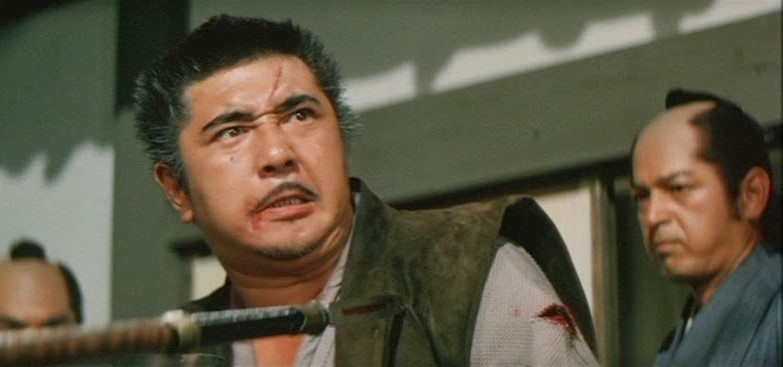
There’s also a grim sense of humor to the proceedings that is well-delivered by Wakayama. Even though the character is a spy who even takes on a lover, he is an individual who lacks certain social graces and can come across as gruff at the best of times. Thankfully, the likable lead actor and exaggerated sense of gallows humor makes the nastiness more palatable than expected. There are also a couple of fun nods and in-jokes that will appeal to Japanese cinema enthusiasts. At one point, the protagonist employs a disguise resembling that of blind swordsman Zatoichi (the star’s brother was famous at the time for playing the character). So, while what’s going on is often nasty, there are plenty of winks to the audience suggesting that viewers shouldn’t take any of this very seriously.
As mentioned, the only unfortunate and dated aspect is the treatment of women. Some of the depictions in this picture and follow-ups are poor and female characters are frequently abused by the protagonist. But if one can overlook this issue as an unfortunate part of the culture in the country at the time, the movie is a fast-paced and fun ride.
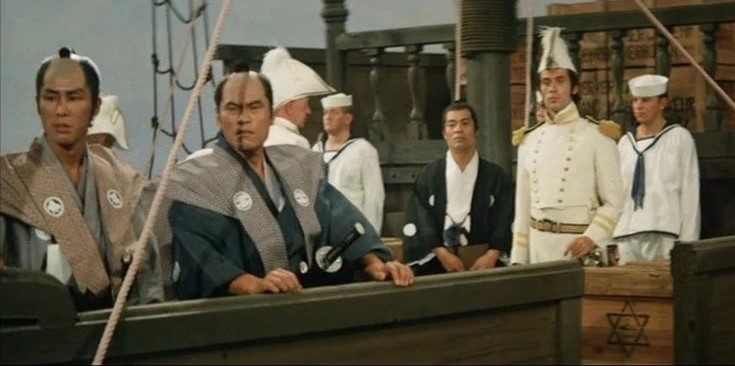
The Blu-ray contains a film historian commentary track and an interview with another cinema expert about the movie, who are both informative. The commentary details the careers of cast and crew members also noting trends at the time and what may have inspired the production. This individual takes note of some of the historical inaccuracies. Apparently, the Dutch were the primary country that Japan chose to trade with during this period and it was a healthy relationship that never involved arms trading. Other anachronistic elements as props and costumes from different eras are pointed out as well. It’s an enlightening history lesson that also delivers film production background information.
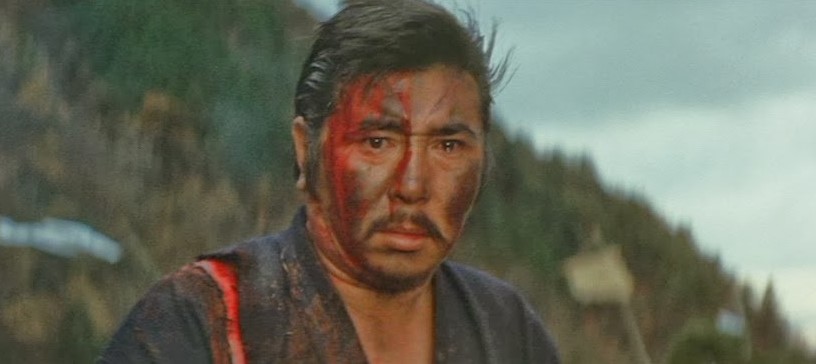
The interview is entertaining as well, discussing director Ozawa. Specifically, it analyzes his unique use of humor and extreme violence that help the movie stand out. Remarkably, both bonuses make mention of the fact that the director was essentially suicidal before this production, fearing that his career was over (thankfully, Ozawa didn’t follow through and ended up working in the business for another 30 years).
The extras also note the issues with female characters in the stories, stating that otherwise the movies might today be as revered as some of his other titles.
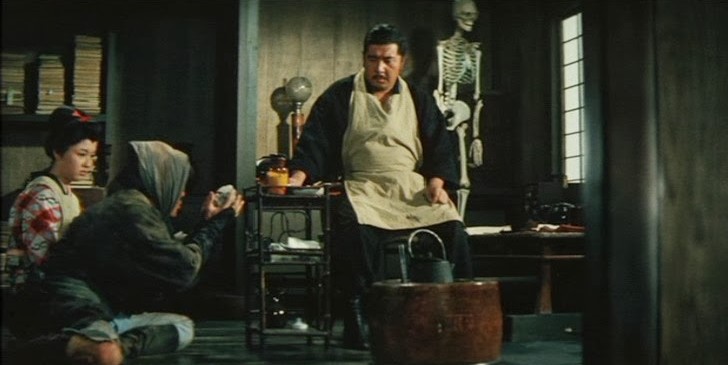
The second Blu-ray contains the two sequels. The first title is The Fort of Death (1969) and it sees Ichibei now running a medical clinic (while possessing a terrible bedside manner). He receives word from a group of farmers that they are being tormented by their Shogun rulers. Ichibei sets out with his cohorts to protect the people, arming them and installing a gatling gun, which he uses when they are attacked. Unfortunately, the new weapon inspires the villains to try and steal it. When they fail, the conflict escalates and cannons enter into the equation. All the farmers and Ichibei square off with enemy forces in a violent showdown that leaves few alive.
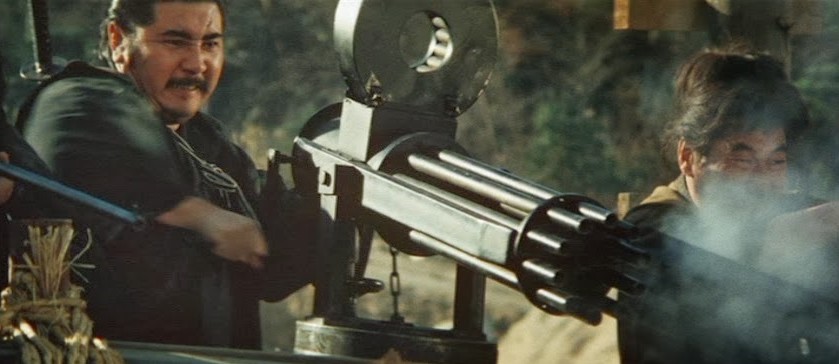
While there are jokes in early scenes involving the clinic, new director Eiichi Kudo takes a more serious approach to the material. The film has a darker color palette and battles between the hero and the invading shogun forces are brutal, leaving hundreds of bodies behind. It does have something of a happy ending though, with the children of those who fought being saved and given freedom with survivors to work their land. Overall, it’s a good sequel that does something different with its main character, showing a slightly more sensitive side while delivering tense battle sequences.
Eight Men to Kill (1972) aka Bounty Hunter 3: Eight Men to Kill is the final picture in the series. It features Killer’s Mission director Ozawa returning to helm the production. Now sporting a perm, Ichibei is still working at his medical clinic, but is hired by Shogun officials to investigate stolen gold at a government mining operation. He follows the trail and discovers that the man accused of having taken the goods is not in possession of them. As it turns out, the majority of individuals in the film are incredibly greedy and willing to kill for the gold if they can get their hands on it. This all results in Ichibei squaring off against both thieves and government officials (whom he blames for not using their massive wealth to support citizens) in a memorable climax.
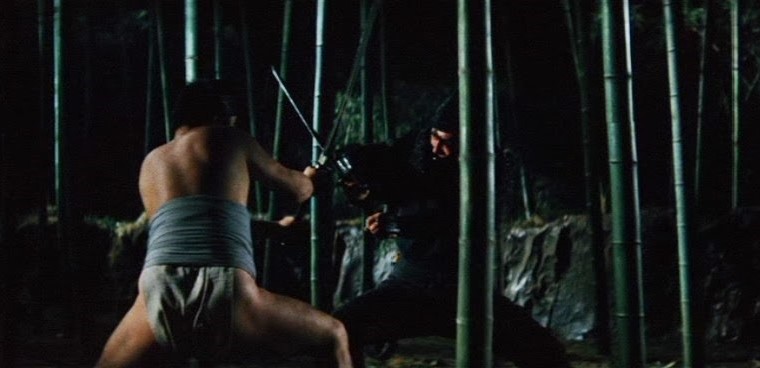
This one isn’t as lavish as the other two, but really embraces the western and Bond feel. There are definitely standoffs and showdowns in this picture involving all sorts of weaponry and exaggerated set pieces (one involves a trap door in the mine). Ichibei also beds a potential suspect in his attempts to find the gold. There are a couple of notably wild action scenes, including a nighttime showdown in a bamboo grove (a flaming body is actually hurled across the screen at one point) and a brutal but also tragic finale. It takes a while to get going, but the picture does end up making an impression.
Extras on this disc include a visual essay on The Fort of Death director Eiichi Kudo and his varied career output.
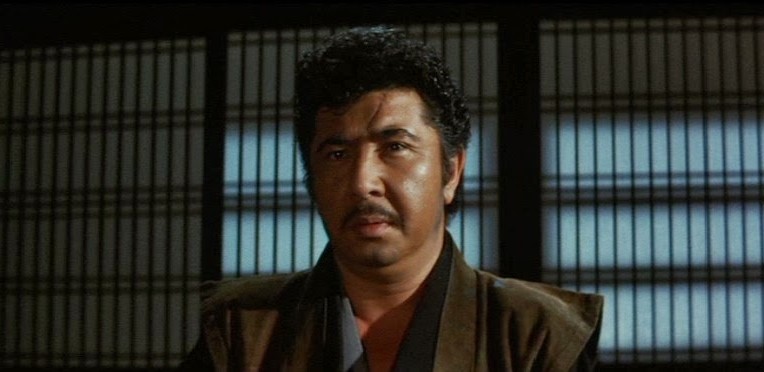
The Bounty Hunter Trilogy titles aren’t perfect, but they are interesting and every one has standout moments. Star Tomisaburô Wakayama is fun to watch and the movies will certainly be of interest to cult film fans because of the extreme and bloody action. The image quality is very good as well. In the end, this release will certainly impress anyone who enjoys the Street Fighter pictures and other action films from this era.


